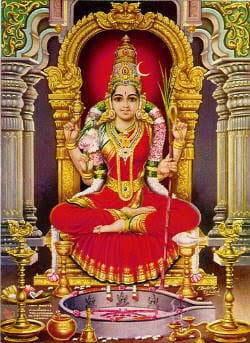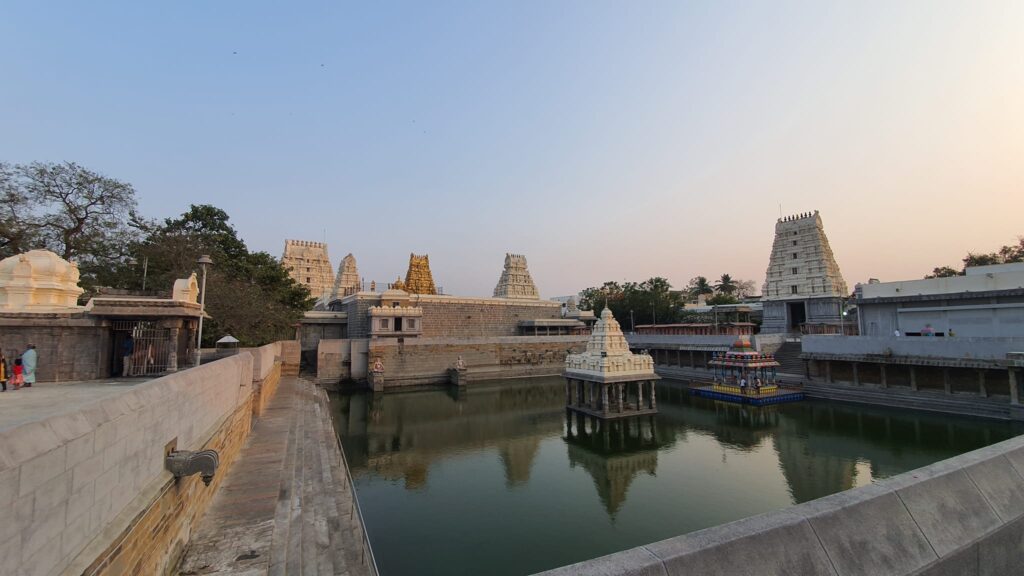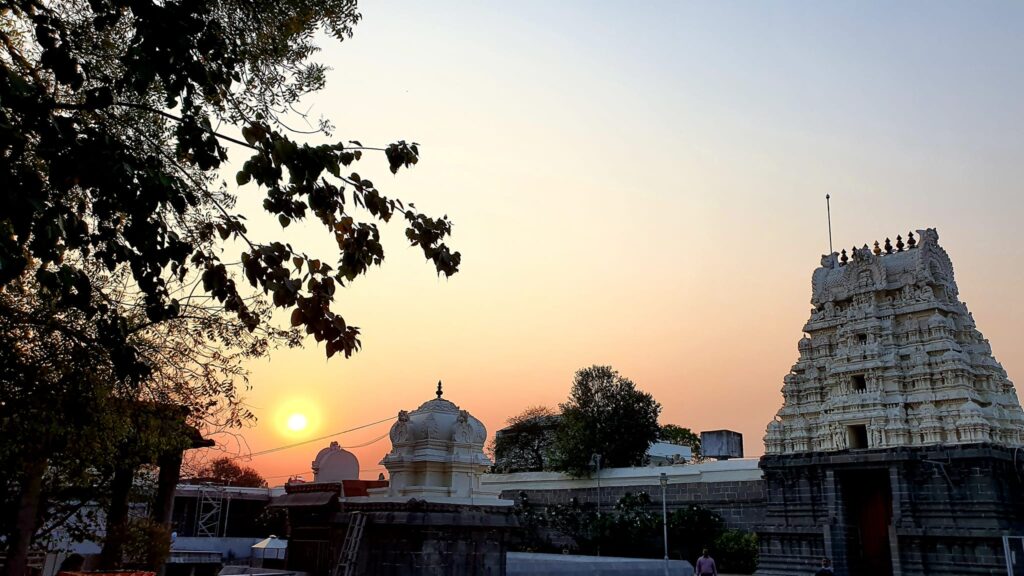Kanchipuri is sacred to all Hindus, Vaishnavite, Saivite and Saktha alike. There are a number of temples dedica ted to Siva, Vishnu, Ganapati etc. in Kanchi, big and small, of architectural celebrity and otherwise. But most of them are ancient.
The shrines of Sri Varadaraja (Hastisailanatha ), of Sri Ekamranatha and Sri Kamakshi are the most celebrated of these temples. The Kamakshi temple seems to be one of the most ancient temples of our land since we find a reference to it in one of the old Tamil verses cited by Adiyarkunallar the famous commentator of Silappadikaram (one of the five great Tamil classics), while dealing with Karikala’s expedition upto the Himalayas.
One important thing that strikes the shrewd observing pilgrim visiting to Kanchi, is that the towers (gopuras) of the import ant temples of this city far and near, face the Kamakshi temple.
The processions, of the yatrotsavamurtis (icon taken out during festivals) of all the temples are taken out only along the four principal streets (Rajaveethies) of the Kamakshi Temple. Above all these; it is of significance to find no sanctum sanctorum (Garbhagriha) for the Devi in any of the Siva shrines within the limits of Kanchi city; be the temple small or big.
But just outside the boundaries of this holy city one finds Mula Vigrahas of stone of the Devi in all Siva temples far and near Kanchi.
The reason for this is to be found in the Kamakshi Vilasa Purana wherein it is stated that in blessing Manmatha (Cupid) on having been satisfied with his penance, Sri Kamakshi drew unto her Bilakasa Svarupa (air form in a cave) all the Sakti (Powers of the Devi) scattered in all the Devi shrines of the land.
But later, on the prayer of Brahma, the creator, She vouchsafed that all Siva Temples of the land save those in Kanchipuri, styled as ‘Shivajitkshetra’ shall have Devi Shrines.
The portion of Kanchi city in which the shrine of Sri Kamakshi is situated is called Kamakoshtam in Sanskrit and as ‘Kamakottam’ in Tamil. It is evident that only from this terminology, the author of the Bhagavata has referred to Kanchipuri as Kamakotipuri (or Kamakoshti).
A study on inscriptions on the walls of many a South Indian temple reveals that all Devi shrines, inside Siva Temples in South India, were called only as Kamakottams, after the Kamakoshtam of Kanchi.
Three of the 63 Nayanmars (Tamil saints), Appar, Sambandar and Sundarar have referred to the Kamakoti of Kanchi and of them Sambandar has referred to even ‘Kacchi Kamakoti’.
From these it is evident that only the Sakti in Kamakoshtam has per meated throughout the land and that Sri Kamakshi is the nucleus of Sakti.
Inside the Kamakshi shrine at Kanchi, there are the icons of Adivaraha commonly called ‘Kalvar’ identified as one among the 108 Vaishnavite holy places.
By the side of Kamakshi in Raja Rajeswari pose, we find the Tapas Kamakshi and in front, the Srichakra consecrated shalagrama shalagrama shila by Adi Sankaracharya.
The Bilakasa is spread under Devi Kamakshi. The whole city is permeated with the air of the Bilakasa according to the Kanchi Mahatmya. Every year on the Aipasi Pooram day, special poojas are conducted for Devi and Bilakasa.



